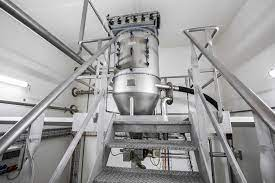Whether you are looking to transport food or consumer products, vacuum conveyors can help. These types of conveyors are energy-efficient, easy to install and clean, and can handle bulk materials from a variety of sources.

A vacuum conveyor works by utilising a pressure differential to pull air out of the conveyor frame. This allows the product to travel directly on the conveyor.
These systems are designed to be flexible, so that they can work around any obstacles. They are used in pharmaceutical industries, large retail stores, and food packaging. They are especially useful in areas where the environment is harsh. These vacuum systems have also been used in chemical and aerospace industries. For details on vacuum conveyor systems, go to Aptech, suppliers of vacuum conveyor technology.
These conveyors are made at different levels and can be easily disassembled. They also feature a quick-lock (clamp) system, which makes it easier to reassemble them.
There are two types of vacuum conveyors: dense and dilute. The latter is particularly useful for applications that require low pressure, such as in pharmaceutical and food production. The former is most commonly used to move powdered or fine dry materials.

The type of material you are handling will determine the best conveying medium. It also affects the overall size of the line. Using the correct conveying equipment can keep your production lines flowing smoothly.
A vacuum conveyor is a great addition to an automated or control-oriented system. A vacuum conveyor is also a useful tool for plastic production and recycling.


